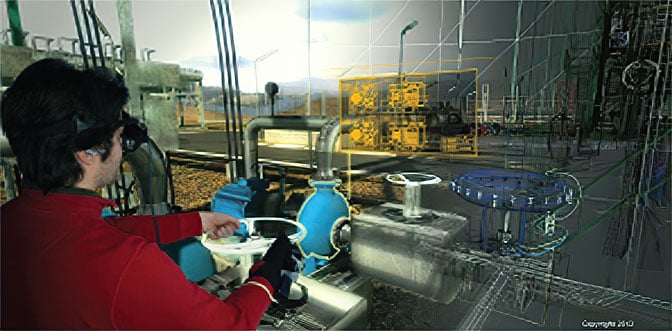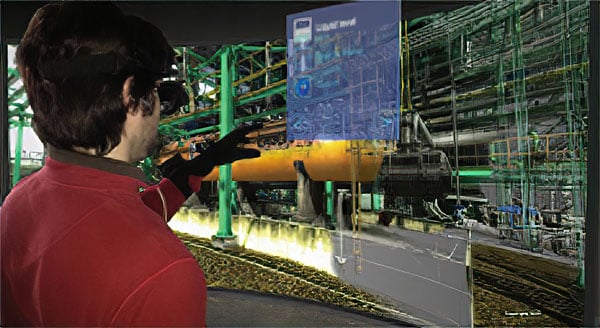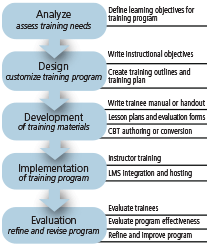With as much as 40 percent of the current workforce in some industries retiring in the next five years and increasing difficulty in attracting new talent, innovative training and certification solutions are essential. Keeping plants operating safely, with optimal performance and reliability, requires companies to find new ways to improve the competency of their operators. This article describes some of the promising technologies that will shape operator training in the coming years.

Operations staff directly affects plant safety, availability, and reliability. Rising fines and costs associated with incidents such as unplanned outages, accidents, and spills are among the additional factors driving the creation of new programs for safety and operational excellence. Operator training simulators (OTS) are a key component of such initiatives. Process manufacturers buy simulator systems to train new employees, to update the skills of existing engineers, and to institutionalize and retain the knowledge of experienced operators. Although dynamic simulation and operator training simulators have been available for a long time, technology and applications continue to evolve around customers' growing needs to improve training. Now companies are investing in three areas: integrating OTS systems into conventional corporate training programs, running OTS in virtual environments to avoid project schedule conflicts, and adding three-dimensional (3-D) virtual reality capability to reduce training costs and improve safety.
Integrating OTS
Course development, training materials, and instruction are the fundamentals of any good OTS program. However, a modern environment also requires companies to deliver traditional programs in different ways and to integrate the information with existing learning management systems (LMS). Over the past three or four years, there has been a growing interest in the concept of corporate operator training simulators (C-OTS) that address this requirement, including increased adoption of the sharable content object reference model standard, which facilitates sharing among disparate e-learning systems.
Improving safety-critical skills by enabling operators to perform tasks in a simulated environment, allowing them to react quickly and correctly, facilitating reactions in high-stress conditions, and instilling confidence and standards for teamwork and communications.

Conceptually, a C-OTS encapsulates a remotely hosted operator training simulator. The solution involves a client-server architecture in which the server runs the simulation model remotely, and the customer accesses the simulator through the client.
Maximizing the benefit of such simulators requires an organized, comprehensive training program that optimizes the use of the simulator and operator job performance. Doing so effectively requires upfront attention to details and answers to the following questions:
- How will I conduct training on the OTS once it is delivered?
- How will the OTS be incorporated into the programs we already have in place?
- How can I leverage the plant data and training materials we already have in producing my simulator training materials
- How do we make sure the investment made in an OTS has long-term value?
Addressing these questions early in the process can add significant value to the OTS investment and, if a comprehensive plan is built around such questions, can safeguard that value for the life of the plant (while also capturing the knowledge and experience associated with the simulator construction and validation). The five-phase, performance-based training approach shown in the diagram is an effective guide to reaching this goal.
Following this procedure will help companies develop a comprehensive, translatable, performance-based program that meets the operational goals of the facility. Trainees would learn to respond to upsets in proper, predictable ways, and their growth as operators would become real, visible, and documented.
Control and safety testing
Concurrent development of control and safety systems can sometimes require training to begin before the system is commissioned. In an ideal world, there would be plenty of time first to develop all the controls, then test the controls thoroughly, integrate them with the process model, test the entire system as a whole, and finally turn the simulator over to the client for operator training-all well before the commissioning of the plant, preferably three-to-six months in advance. In reality, however, many OTS projects struggle to meet this schedule, often because of late changes to plant and control designs from the engineering procurement and construction firm.

Once all parties understand such conflicts, they can address them through informed, coordinated project management and smart engineering productivity tools. Separating the control algorithms from the real hardware allows the algorithms to run fast, slow, or in a single-step mode to facilitate validation and training. A modern simulation environment discussed earlier, for example, includes a wide range of sophisticated tools to allow concurrent development of the operator training simulator and the development, testing, and retesting of the control and safety system.
Hardware virtualization is another area in which technology can support the delivery of complex integrated projects and the development of the OTS system itself. High-fidelity operator training simulators often include relatively complex hardware architectures with multiple workstations required for the various simulation, controls emulation, and operator workstation components. Implementing several OTS systems for numerous key plant units multiplies this hardware real estate challenge. Developing the systems on virtual servers allows the hardware and operating system to be decoupled from the software applications needed to train personnel or simulate a plant control system.
Deploying virtual images on machines capable of serving multiple applications to multiple users can have many advantages. Not only might this reduce the hardware footprint of the installed system, it also gives more flexibility in how the OTS is engineered and utilized during the control testing phase of a project, as well as how it is maintained and supported throughout the life of the plant.
3-D virtual reality training
Once reserved for cutting-edge engineering and creative industries, 3-D visualization is being used in new and innovative ways across a number of industrial sectors, helping to safely and effectively train plant operators and staff.
The emergence of 3-D visualization as a method of training has grown out of the need of many industrial companies and organizations to instruct their employees in a safe and secure environment. In addition, the nature of continuous process plants necessitates minimal downtime, and there are often few opportunities for initial training of new staff and for ongoing training for experienced staff, particularly in scenarios that may only occur rarely.
 Five-phase, performance-based training approach[/caption]
Five-phase, performance-based training approach[/caption]Plant operators can benefit from incorporating 3-D visualization into their training systems in many ways. Chief among these is the ability to have high-fidelity operations, maintenance, and safety training in a cost-effective, low-risk setting. Putting people in the field in dangerous and often remote locations, such as offshore energy platforms, strictly for training purposes, is not only costly, but also risky to platform operators, their co-workers, the facility itself, and the environment. Because of advances in simulation, visualization, and interactive gaming technology, it is now possible for offshore operators to learn much of their craft in a safe, realistic training environment.
Virtual reality simulation is particularly well-suited for industrial training, where remote, unsafe, and pressure-filled sites are increasingly common. This type of technology enables platform operators to receive a large portion of their training in a virtual environment, reducing cost and risk. For example, risk of injury can be eliminated because operators are not immediately placed in an unfamiliar environment. After going through such training programs, operators are less likely to make mistakes such as spills or shutdowns, which could have serious consequences. They are also less likely to encounter emergencies they have never before experienced. In situations where units are shut down only once every year or less often, virtual reality training is an invaluable practice tool for staff at all levels.
Many believe this approach fits especially well with the new generation of engineers and plant operators who are already familiar with this technology and who are used to an entirely different learning environment than previous generations experienced. In addition to providing a more realistic training environment, 3-D virtualization training ensures a more interactive and hands-on experience.
It is a very exciting time for many industrial companies and organizations as they help drive virtual reality solutions and create innovative and practical applications directly relevant to their staff's needs. As the conditions and demands on the industry evolve, plants of all kinds are increasingly using virtual environments to help plant operators and staff rapidly adapt and hone their skills.
Looking ahead
Integrating OTS into corporate training programs, applying virtualization, and using 3-D virtual reality are but three examples of how operator training simulators have been adapted to meet the demands of the modern workforce. We expect these synergistic approaches and other emerging technologies (e.g., mobile computing, remote operations, workflow technology, and situational awareness graphics) to result in continued advances in the world of operator training simulation, contributing to a new generation of safe, productive, and profitable plant operation.
A version of this article also was published at InTech magazine.




